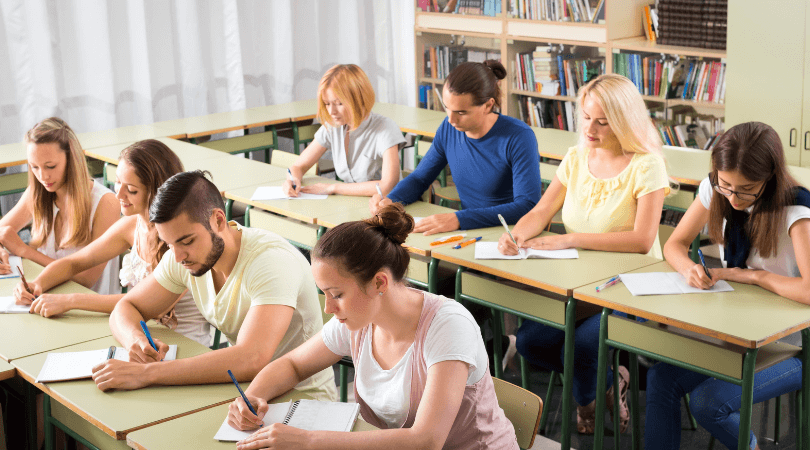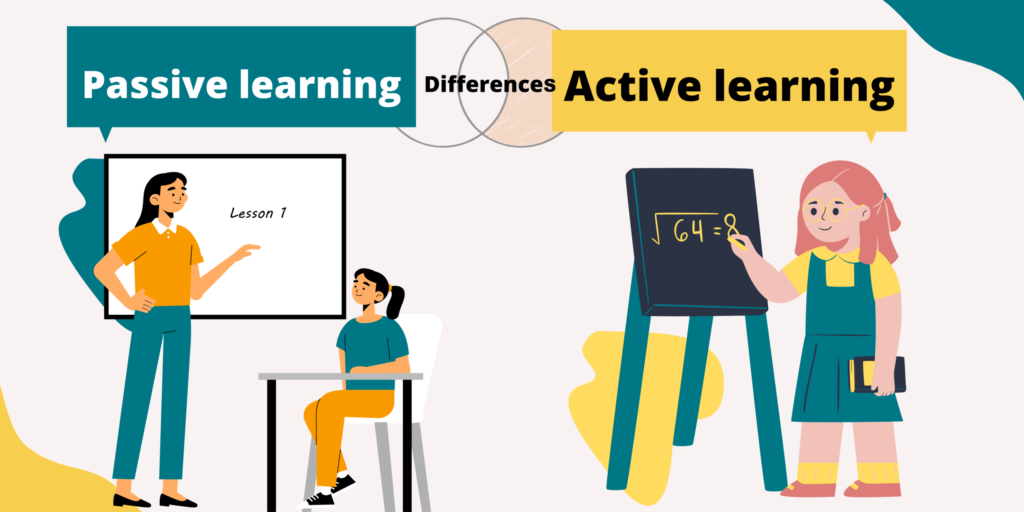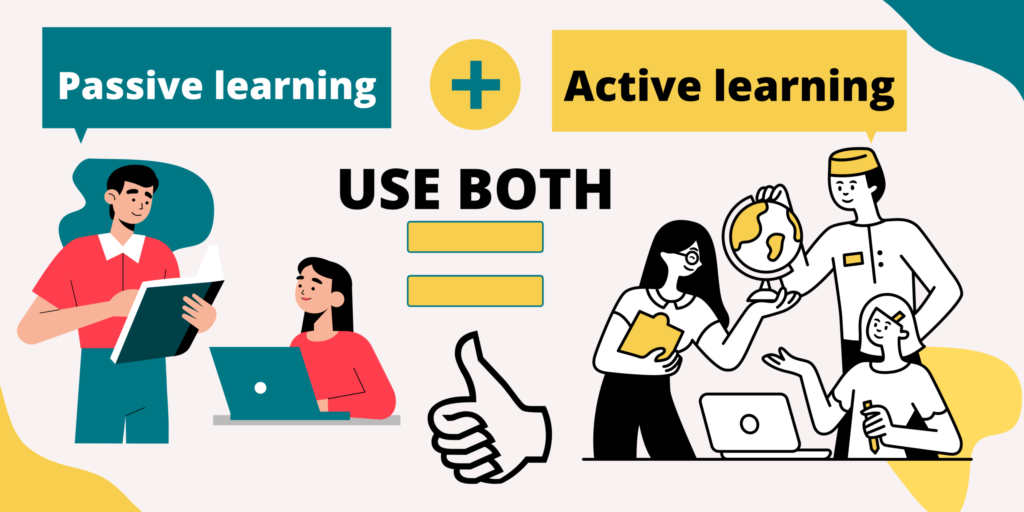Education is not a one-size-fits-all endeavor; it’s a dynamic journey that requires tailored strategies to meet the needs of both educators and learners. Two prominent approaches, active and passive learning, have taken center stage in discussions about effective pedagogy. As educators strive to create engaging and impactful learning experiences, the choice between these methods becomes crucial. In this article, we will delve into the core concepts of active and passive learning, exploring their advantages, disadvantages, and the diverse range of activities that fuel each approach. Additionally, VTJ will dissect the key differences between these methodologies and offer insights into when and how to employ them for optimal results.
What is Active Learning?

Active learning is an educational approach that emphasizes student engagement in the learning process. It moves away from passive listening and memorization and encourages students to take an active role in constructing their knowledge. Through activities and interactions, such as discussions, group work, and hands-on experiences, students develop critical thinking skills, problem-solving abilities, and a deeper understanding of the subject matter. Active learning promotes collaboration, communication, and reflection, making the learning process more enjoyable and effective.
Explore More Teaching Tips: Lesson Objectives (Learning Objectives): How to Write in 4 Steps
Active Learning Advantages
Active learning offers several advantages over traditional lecture-based methods. Firstly, it enhances retention as students actively engage with the material, leading to better information recall. Secondly, it improves critical thinking skills by encouraging students to analyze information and make connections between concepts. Additionally, active learning increases motivation and engagement, as it makes the learning process more interactive and enjoyable. It also helps students develop better problem-solving skills by applying their knowledge to real-world situations. Lastly, active learning promotes effective communication and teamwork among students through collaborative activities.
Active Learning Disadvantages
While active learning has numerous benefits, it also presents some challenges. One disadvantage is that it can be time-consuming for educators to plan and execute active learning activities compared to traditional teaching methods. Additionally, implementing active learning strategies may require additional resources, such as technology and materials, which can pose logistical challenges. Some students and educators may also be resistant to change, preferring more traditional teaching approaches. In group activities, there is a risk of unequal participation, with some students dominating the discussion while others remain passive. Lastly, assessing individual student performance in active learning environments can be more complex, as it often involves evaluating complex skills and group dynamics.
Discover Related Guides: Leadership Styles in Education: 8 Effective Ways to Lead
Activities That Stimulate Active Learning
There are various activities that stimulate active learning and engage students in the learning process. Group discussions encourage students to exchange ideas, debate topics, and actively participate in the learning experience. Problem-solving exercises present real-world problems or case studies, allowing students to apply their knowledge and develop critical thinking skills. Role-playing and simulations simulate real-life scenarios, enabling students to practice decision-making and apply theoretical concepts. Hands-on experiments and demonstrations provide direct experiences that help students understand concepts better. Lastly, interactive technology, such as online quizzes, virtual reality, or educational games, can enhance student engagement and active participation in the learning process.
Continue Learning: Meaningful Feedback for Students: Importance, Tips and Examples
What is Passive Learning?

Passive learning, in stark contrast to active learning, adheres to the conventional approach of education where students primarily receive knowledge through lectures, readings, or presentations. In this method, students take on a more passive role, absorbing information without being directly engaged in interactive activities. The instructor takes the center stage, imparting information in a structured manner, often following a predetermined curriculum. This method has long been a cornerstone of education, offering efficient content delivery and a clear learning structure. However, it also presents certain limitations, particularly in terms of reduced engagement and a potential focus on surface-level understanding.
Passive Learning Advantages
Passive learning comes with its own array of advantages that have cemented its role in educational settings. Lectures, presentations, and directed readings can efficiently convey substantial amounts of foundational content within a relatively short span. The structured nature of passive learning ensures that students follow a prescribed curriculum, receiving a consistent flow of information. This approach is particularly valuable when it comes to introducing core concepts and building a foundation of knowledge.
See More Strategies: What is Independent Learning and How It Works: A teacher’s guide
Passive Learning Disadvantages
Yet, the advantages of passive learning are accompanied by certain drawbacks that warrant consideration. While passive learning efficiently delivers information, it often lacks the engagement that active learning fosters. Students might memorize facts without delving into the deeper understanding of underlying concepts. Critical thinking and problem-solving skills, which are essential for real-world applications, might not be emphasized as rigorously as in active learning approaches. This can result in a disconnect between the learned material and its practical application.
Read More: 13 Types of Students in the Classroom and How to Deal with Them
Activities That Stimulate Passive Learning
While passive learning is primarily characterized by the transmission of information, there exist strategies that can invigorate this method and make it more engaging. Employing multimedia resources, such as videos, animations, and online simulations, can supplement traditional lectures and readings. Guided discussions centered around key topics from lectures or readings can encourage students to explore ideas collectively. Assigning reflective writing tasks where students express insights gained from the material can encourage introspection and deeper thinking. By thoughtfully integrating these activities, educators can bridge the gap between passive learning and active engagement, enriching the overall learning experience for students.
Explore More: What Is Inquiry-Based Learning (IBL)? Types, Benefits & How to Use
Active vs. Passive Learning: What are the Differences?

The ongoing debate between active and passive learning highlights the contrasting approaches that shape the learning experience. Each approach brings its own set of attributes and implications, influencing the way students engage with information, their peers, and their instructors. As we delve into the nuances of active and passive learning, we uncover key differences that can inform instructional decisions and enhance the effectiveness of educational practices.
Related Guides: How to Teach Writing Skills to Students Effectively in 8 Simple Steps
Active vs. Passive Learning: Communication Style
Active Learning: In active learning, communication is typically two-way and interactive. Students actively participate in discussions, ask questions, and engage in collaborative activities.
Passive Learning: In passive learning, communication is primarily one-way, with the teacher delivering information and the students listening or observing without much interaction.
Read More: 10+ Strategies of How to Teach Reading Comprehension in the Class
Active vs. Passive Learning: Involvement
Active Learning: Active learning requires students to be actively engaged in the learning process. They take responsibility for their learning, participate in activities, and apply concepts to real-world situations.
Passive Learning: Passive learning involves students being more passive recipients of information. They may listen to lectures, read textbooks, or watch demonstrations without actively engaging in the learning process.
Explore More Teaching Tips: 5 Types of Teaching Styles (Their Pros & Cons)
Active vs. Passive Learning: Orientation
Active Learning: Active learning focuses on student-centered approaches, where learners take an active role in constructing their knowledge and understanding. It emphasizes critical thinking, problem-solving, and independent learning.
Passive Learning: Passive learning tends to be more teacher-centered, where the teacher imparts knowledge and the students receive and absorb it. The emphasis is on transmitting information rather than active engagement.
See More Strategies: Why Students Get Bored & How to Engage Bored Students in the Class
Active vs. Passive Learning: Control of Materials
Active Learning: In active learning, students have more control over the learning materials. They may choose resources, conduct research, and explore different sources of information to enhance their understanding.
Passive Learning: In passive learning, the teacher typically controls the learning materials, selecting textbooks, handouts, or other resources for the students to study.
Active vs. Passive Learning: Evaluation Methods
Active Learning: Active learning often involves formative assessments, such as group discussions, presentations, projects, or problem-solving activities. These assessments focus on understanding and application of knowledge.
Passive Learning: Passive learning often involves summative assessments, such as quizzes, tests, or exams, which measure the students’ retention of information and their ability to recall facts.
Read More: 22+ SMART Teacher Goals Examples in 2025
Active vs. Passive Learning: Retention Rate
Active Learning: Active learning has been shown to improve retention rates as students are actively engaged in the learning process. They are more likely to remember and understand concepts when they actively participate and apply them.
Passive Learning: Passive learning may have lower retention rates as students are more passive recipients of information. They may forget or have difficulty applying concepts if they haven’t actively engaged with the material.
Active vs. Passive Learning: Role of the Teacher
Active Learning: In active learning, the teacher takes on the role of a facilitator or guide, providing support, guidance, and resources to help students explore and construct their knowledge.
Passive Learning: In passive learning, the teacher plays a more traditional role as the primary source of information, delivering lectures or presentations and providing explanations.
Explore More: Guide on How to Teach Vocabulary Effectively for Teachers
Active vs. Passive Learning: Modes of Thinking
Active Learning: Active learning promotes higher-order thinking skills, such as critical thinking, problem-solving, analysis, and synthesis. Students are encouraged to think deeply, make connections, and apply their knowledge.
Passive Learning: Passive learning may focus more on lower-order thinking skills, such as memorization, recall, and comprehension. The emphasis is often on absorbing and understanding information rather than critical thinking.
Related Guides: How To Write a Curriculum in 8 Steps: A Complete Guide
Active vs. Passive Learning: Methods of Gaining Knowledge
Active Learning: Active learning encourages students to actively seek and construct knowledge through hands-on experiences, discussions, research, and problem-solving activities.
Passive Learning: Passive learning relies more on receiving knowledge from external sources, such as lectures, textbooks, or demonstrations, without active involvement in the knowledge acquisition process.
Continue Learning: 4 Types of Learning Styles: How to Use VARK Model in Teaching
Active vs. Passive Learning: Which One to Use?

In the dynamic landscape of education, the choice between active and passive learning is a critical decision that significantly impacts the learning experience. While both approaches possess their merits, determining the right one depends on a myriad of factors that influence the effectiveness of instruction and the engagement of students. So, how do educators and learners navigate this decision? Let’s delve into considerations that can guide the selection of the most suitable approach for different learning scenarios.
Read More: How To Write a Lesson Plan in 6 Steps: The Complete Guide
Understanding Learning Objectives
The first step in making an informed choice is to identify the learning objectives. Active learning is particularly effective when the aim is to foster critical thinking, problem-solving, collaboration, and the application of knowledge. If the goal is to introduce foundational concepts efficiently, passive learning methods like lectures and directed readings can provide a structured foundation.
Explore More Teaching Tips: 20+ Effective Classroom Management Strategies and Techniques
Subject Matter and Complexity
The complexity of the subject matter plays a significant role in deciding the approach. Active learning is well-suited for topics that demand in-depth exploration and analysis, allowing students to grapple with complex problems. Passive learning might be more appropriate for disseminating factual information that serves as a basis for further exploration.
Discover Related Guides: Practical Tips to Deal with Negative Teacher
Class Size and Resources
The size of the class and available resources also influence the decision. Active learning, while highly engaging, can be resource-intensive in terms of preparation and facilitation, especially in larger classes. Passive learning, with its structured format, can accommodate larger groups more efficiently.
Continue Learning: 15+ Ways to build confidence in your ESL students
Diverse Learning Styles
Students’ learning styles vary, and a balanced approach can cater to these differences. Integrating both active and passive elements can accommodate visual, auditory, and kinesthetic learners, creating a well-rounded learning experience.
Read More: 14 Types of teaching methods for an effective lesson
Assessing Outcomes
Consider the desired learning outcomes. Active learning can lead to deeper understanding and long-term retention, while passive learning might be more suited for introductory concepts that serve as building blocks.
Explore More Teaching Tips: Formative and Summative Assessment: What’s the Difference?
The juxtaposition of active and passive learning unveils a rich tapestry of educational approaches, each with its distinctive advantages and limitations. The choice between these methods becomes a pivotal decision that shapes the learning experience and outcomes. In a dynamic educational landscape, the key lies in finding a harmonious balance between these two approaches. By integrating elements of both active and passive learning, educators can tailor their instruction to suit diverse learning objectives, subject complexities, and the unique needs of their students. This integration allows for a holistic educational experience that fosters deep understanding, critical thinking, and the acquisition of essential skills.
FAQ
Why is active learning more effective than passive learning?
Active learning is more effective than passive learning because it engages students in interactive activities that promote critical thinking, problem-solving, collaboration, and deeper understanding. Active learning encourages students to actively participate, apply concepts to real-world scenarios, and retain information better compared to passive methods like lectures and readings, which primarily involve passive absorption of information.
Are you facing difficulties in finding and securing teaching positions in Vietnam? Are visa procedures causing you trouble? Feeling overwhelmed and directionless upon your arrival in Vietnam for teaching assignments? Don’t worry, VTJ’s English Teaching Placement in Vietnam (EPIV) Program 2024 provides comprehensive support to solve ALL the matters.
👉👉👉 Click HERE to request free consultation






